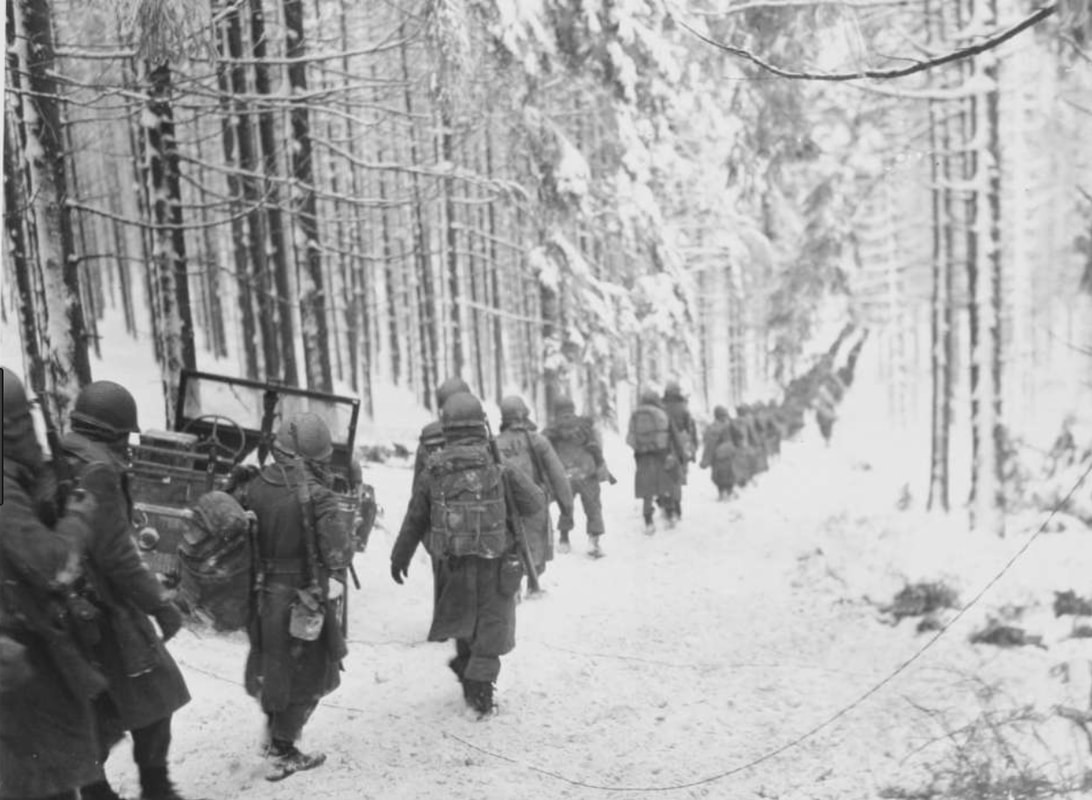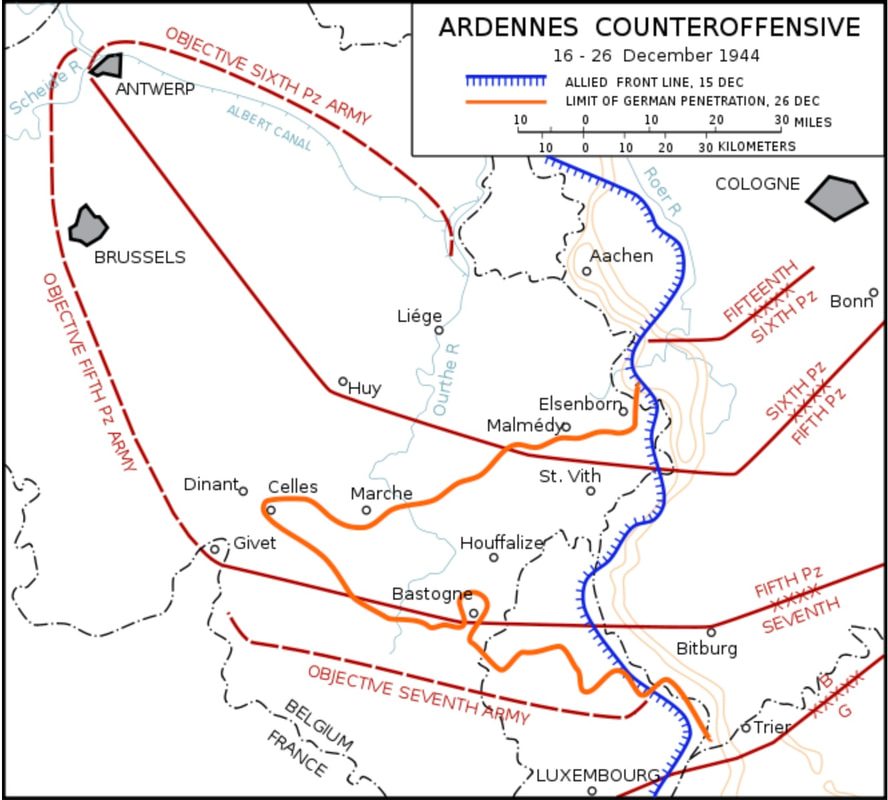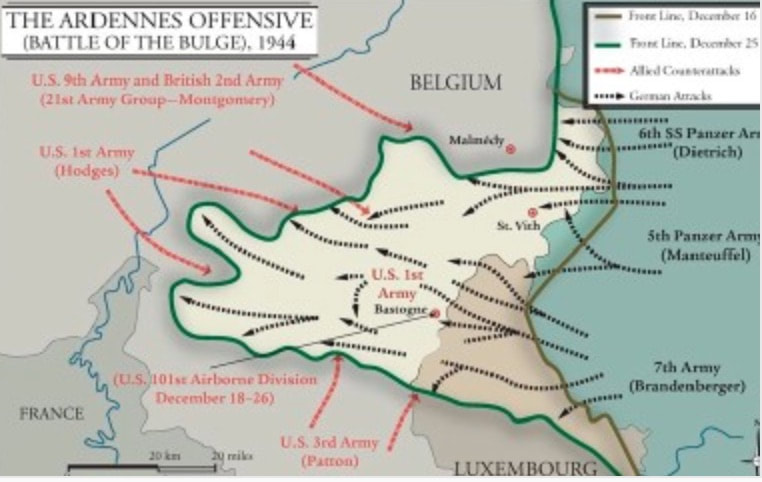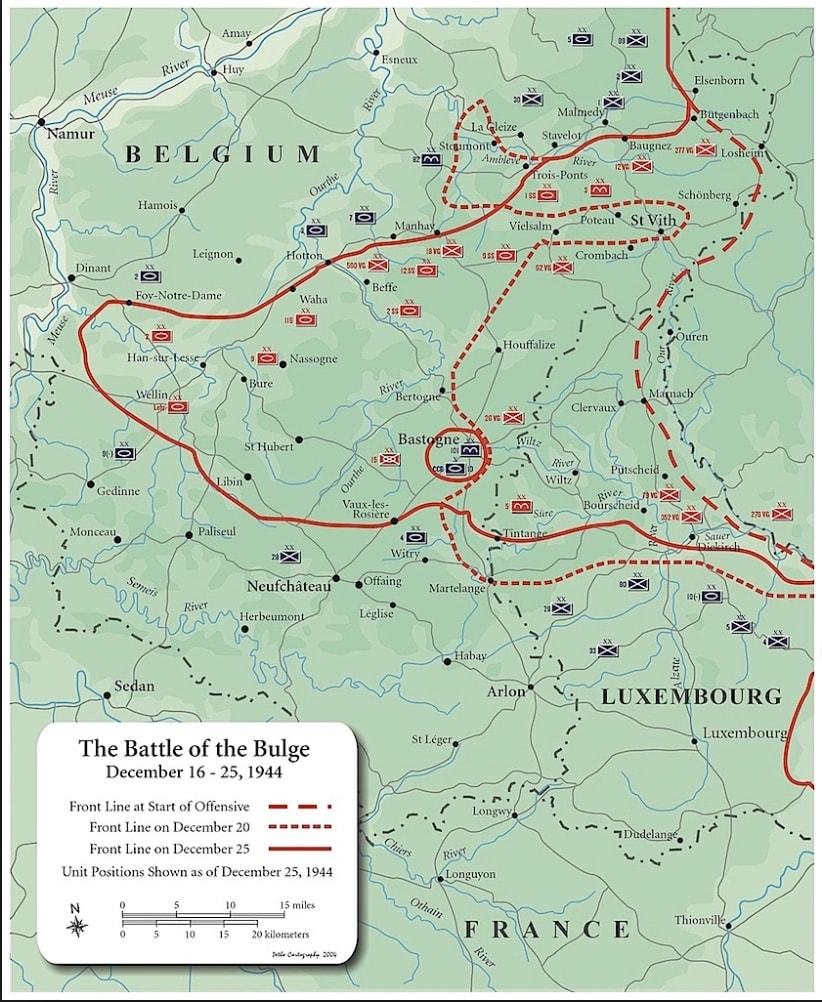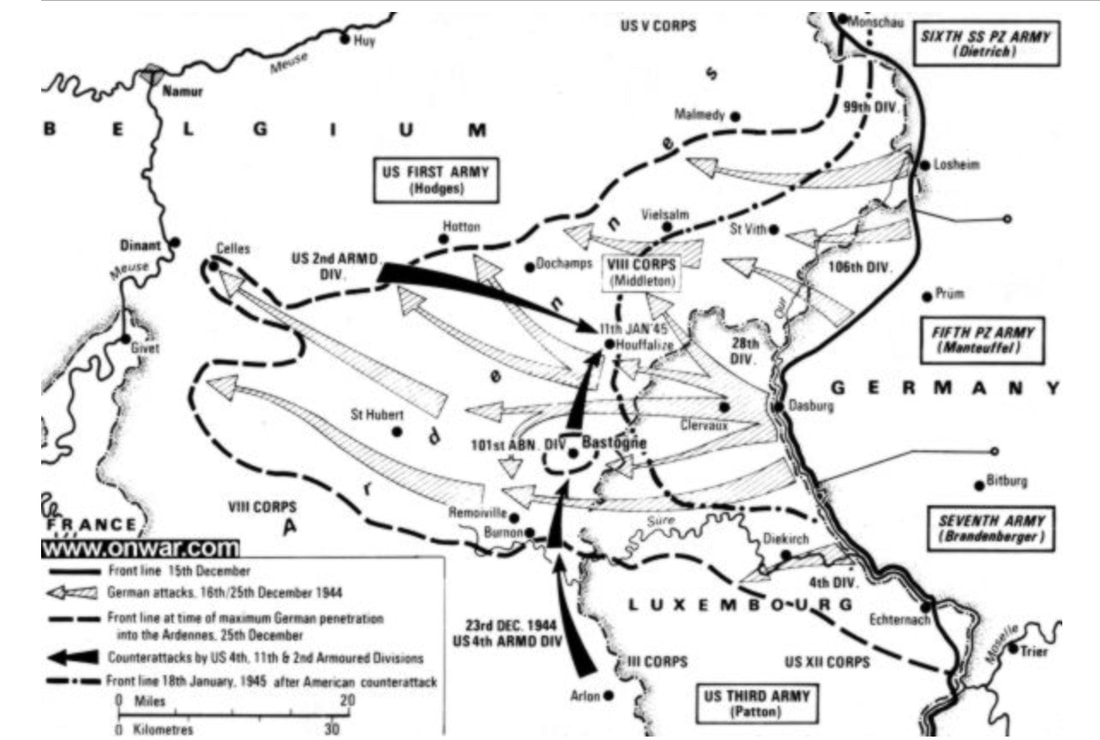bigpigeon.us webpage WWII - Germany > ETO > Enemy Counteroffensives > Ardennes/Bulge Overview, updated by RAC 18 Jul 2022. Incomplete.
This webpage will be deleted once I have salvaged all desired elements.
The Battle of the Bulge, fought in the early winter of 1944-45, was a desperate attempt by the German Wehrmacht to split the Allied forces in the European Theater by advancing across Belgium to the port of Antwerp. Neither this grandiose goal nor the more moderate goal of crossing the Meuse River was realized. The result was an American strategic victory. The German army lost valuable reserves and were eventually forced to withdraw. However, Allied losses in men and material were roughly the same as German losses.
Links to related webpages:
This webpage will be deleted once I have salvaged all desired elements.
The Battle of the Bulge, fought in the early winter of 1944-45, was a desperate attempt by the German Wehrmacht to split the Allied forces in the European Theater by advancing across Belgium to the port of Antwerp. Neither this grandiose goal nor the more moderate goal of crossing the Meuse River was realized. The result was an American strategic victory. The German army lost valuable reserves and were eventually forced to withdraw. However, Allied losses in men and material were roughly the same as German losses.
Links to related webpages:
|
Ardennes - An Executive Summary
Early on 16 December 1944, the German Army - the Wehrmacht - began a massive counteroffensive smashing into US First Army lines in the wooded and hilly Ardennes Plateau in northern Luxembourg and eastern Belgium. Within ten days, German forces formed a large bulge in US lines, thus creating the popular name Battle of the Bulge for this lengthy and bloody battle that is more properly called the Ardennes Counteroffensive, or by one of the two German titles, Wacht am Rhein or Herbstnebel. The Wehrmacht failed to attain its ambitious objectives and gradually began to withdraw. In the Ardennes Counteroffensive, the Wehrmacht used up much of its reserves but delayed the planned Allied offensives to the east by at least six weeks. |
|
Ardennes - An Informal Overview:
|
|
The story of the siege of Bastogne at Christmas and Patton's relief of Bastogne on December 26 cause many to believe that the Battle of the Buge ended in December 1944. In truth, long and bloody conflict continued through most of January as the territory seized by the German offensive in December was slowly recaptured. Of the eighteen men in my database who died in the Battle of the Bulge, nine died in January.
After 25 December, stiffening Allied resistance and Germany's shortage of gasoline eventually led to a slow German withdrawal. The bulge was closed by troops from the US First Army advancing from the northwest and the Third Army from the south around 16 January. The battle officially ended on 25 January. |
By early February, the mid-December Allied lines had been restored and the Allies were beginning to advance across the fortified Siegfried Line, aka the Westwall, and through the German Rhineland to the Rhine River. However, along most of the front, Allied advances in February were limited. March 1945 would be a different story.
Sources for the WWII Enemy Counteroffensives > Ardennes/Bulge Overview webpage:
- https://www.historynet.com/battle-of-the-bulge/ is the best summary, with an excellent map, I have seen.
- The page header photo Battle of the Bulge is courtesy of the National WW II Museum.
- The Ardennes Counteroffensive - German Objectives map is courtesy of https://vignette.wikia.nocookie.net/world-war-2/images/0/0e/Ardennes_Counteroffensive_Map.png/revision/latest?cb=20160430233135
- The The Battle of the Bulge - Overview map is
- The The Battle of the Bulge - Detail map is courtesy of HistoryNet.
- The Elsenborn Ridge Area map is courtesy of https://alchetron.com.
- The Bastogne Area map is courtesy of https://www.thehistoryreader.com/military-history/battle-of-the-bulge/
- The Bulge Mid-January 1945 map is courtesy of conservapedia.com.


